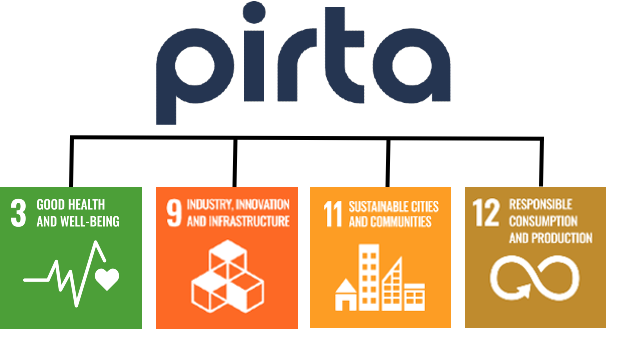Education

Passive Cooling Paint: Global Case Studies in Sustainable Architecture
The real-world applications of passive cooling paints across different regions demonstrate their effectiveness in reducing building temperatures and energy consumption.

The Impact of Heat on Agribusiness Infrastructure and Solutions to Mitigate Risks
Extreme heat poses significant challenges to agribusiness buildings and infrastructure that are often by necessity near farms and ranches in sunny, warm areas. Rising temperatures affect structural integrity, energy consumption, crop yields, supply chains, worker safety, and the performance of automated systems. Understanding these impacts is crucial to develop strategies that maintain operational efficiency and reduce risks.

Comprehensive Guide to Integrating Passive Cooling into Warehouses
In an era of increasing energy costs and environmental concerns, integrating passive cooling strategies into warehouses is an effective way to reduce energy consumption and operational costs. This guide provides an in-depth look at various passive cooling methods, including their advantages, disadvantages, costs, timeframes, and the potential return on investment. Special attention is given to paints and coatings, which play a pivotal role in passive cooling strategies.

Comprehensive Guide to Understanding Passive Cooling and Testing
This comprehensive guide focuses on understanding how passive cooling works, the relationship between solar reflectance, emissivity and the Solar Reflectance Index (SRI), and how these metrics relate to the effectiveness of cooling systems. A particular focus will be on Passive Daytime Radiative Cooling (PDRC), which is gaining attention for its potential to cool surfaces below ambient temperatures.

Integrating AI with Sustainable Energy Efficiency: Enhancing Passive Cooling with AI-Driven Solutions
Artificial intelligence (AI) has the power to revolutionize energy optimization. With global energy consumption continuing to rise, many struggle to reduce energy demand, particularly from cooling systems.

Chief Heat Officers Make Progress Around the World
In 2024, Chief Heat Officers (CHOs) from cities like Miami-Dade, Los Angeles, Phoenix, Athens, and Freetown have made significant strides in addressing extreme heat, a climate challenge exacerbating urban inequalities. The position of CHO is new to cities around the world, and for the past three years, those who occupy it have been moulding both public perceptions and internal policies with regards to the government’s role in protecting people from extreme heat.

Best Practices to Keep Data Centres and Large Warehouses Cool
Cooling large warehouses and data centres is a critical challenge, as these environments require effective temperature control to protect goods and maintain optimal operating conditions for servers and other electronic equipment. Both active and passive cooling techniques are used to achieve these goals, with a growing interest in passive cooling due to its energy efficiency and sustainability.

Unforeseen challenges of common passive cooling strategies and how to solve them
With temperatures reaching record-breaking highs across the world this summer, many communities are looking for ways to beat the heat without increasing energy use or emissions. Passive cooling is an essential tool to accomplish both of these goals, but must be deployed thoughtfully to avoid some common pitfalls.

Examples of how biomimicry has changed our world
“Survival of the fittest”, a phrase commonly used in evolutionary biology, refers to the principle that those best adjusted to their environment are the most successful in surviving and reproducing. All species pass on their advantageous traits to future generations, and over time, evolution culls the optimal design for organisms, which is true at both the microscopic and macroscopic levels.

Why Non-Toxic Paint is Important to You and the World
As awareness of environmental issues and health concerns grows, the demand for safer products to be used in construction and home improvement has never been higher. While effective in providing vibrant colors and durable finishes, traditional paints often contain volatile organic compounds (VOCs), which can have serious health implications and contribute significantly to environmental pollution.

The impact of urban heat islands on health
Urban heat islands (UHIs) are caused by various factors, including the absorption of solar radiation by buildings and pavements, reduced ventilation, scarcity of greenery, and residual heat from vehicles and industrial processes. The increased heat in cities, affects a wide range of physical and mental health outcomes for urban populations.

Paints as a Scalable and Effective Passive Daytime Radiative Cooling (PDRC) Technology
Excessive heat poses significant challenges for warehouses, impacting worker comfort and goods integrity, and increasing energy costs associated with cooling. Cooling paint is one passive cooling solution that is widely available and cost effective.

The economic impact of urban heat islands
Urban heat islands (UHIs) – urbanised areas that experience higher temperatures than outlying areas – are a significant concern for cities worldwide, with far-reaching economic impacts that affect public health, infrastructure, energy consumption, and emergency response efforts.

Warehouse Cooling Systems: How to Stay Cool and Decrease Your Carbon Footprint
Excessive heat in warehouses not only affects the comfort of warehouse workers and the integrity of goods, it also increases energy costs and greenhouse gas emissions associated with cooling.

Impact of heat on warehouses and warehouse employees
One of the main challenges faced by warehouses is heat build-up, especially during the summer months. The most immediate and pressing concern related to heat in warehouses is its adverse effect on workers’ health, productivity, and work capacity.

Passive cooling solutions and mitigation strategies for urban heat islands
The clustering of people and industry generates a phenomenon known as urban heat islands (UHI) — metropolitan areas that are warmer than the surrounding rural areas. Pirta’s on a mission is to expand the currently available passive cooling options.

LEED Certification for paints/coatings
LEED (Leadership in Energy and Environmental Design) certification is the world's most widely used green building rating system, evaluating construction, interiors, exteriors, operations, and maintenance of different types of buildings. Pirta exceeds their standards for paints and coatings in our formulations.

Pirta's alignment to the United Nations Sustainable Development Goals (SDG) Goals
The Sustainable Development Goals (SDGs) represent a set of 17 objectives outlined by the United Nations to tackle pressing global challenges and guide efforts towards a more sustainable and equitable future. Pirta's mission to combat global warming through scientific innovation aligns closely with several key SDGs.

The role of Artificial Intelligence and Machine Learning in the paints and coatings industry
Artificial Intelligence (AI) and Machine Learning (ML) are spearheading a revolution across various industries, reshaping the way businesses operate and deliver value. The dynamic field of paints and coatings is no exception, with AI/ML projected to grow by 40% annually in the construction sector over the next decade. Innovators in paint R&D are harnessing these technologies to improve upon existing capabilities, streamline production, enhance quality control, reduce costs, and optimize formulations.

The practicality and promise of non-toxic paint
In the world of paint manufacturing, incorporating volatile organic compounds (VOCs) into paint formulations has been a longstanding necessity in solvent-based paints and, to a lesser degree, water-based paint.
Follow our Journey
Sign up with your email address to receive news and updates.
